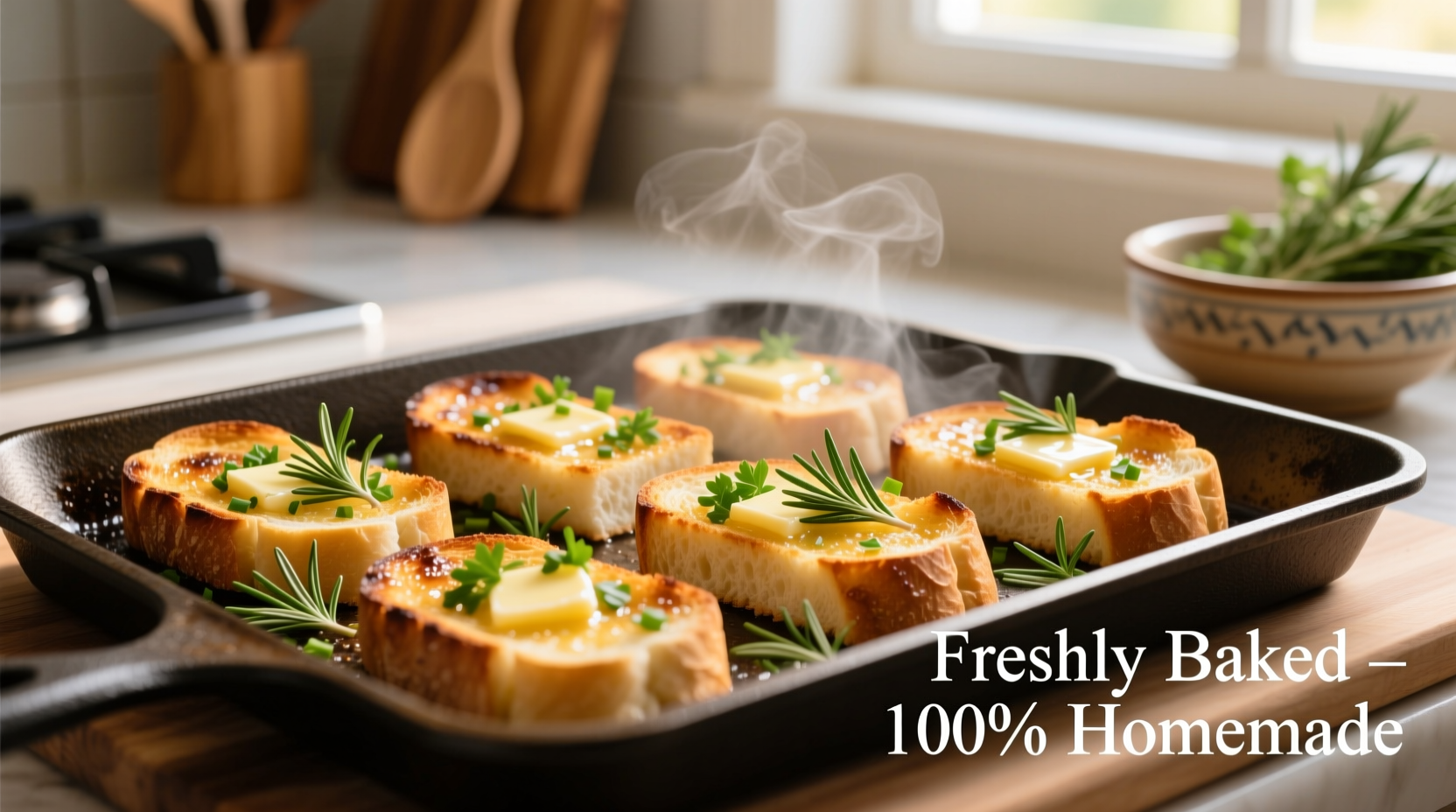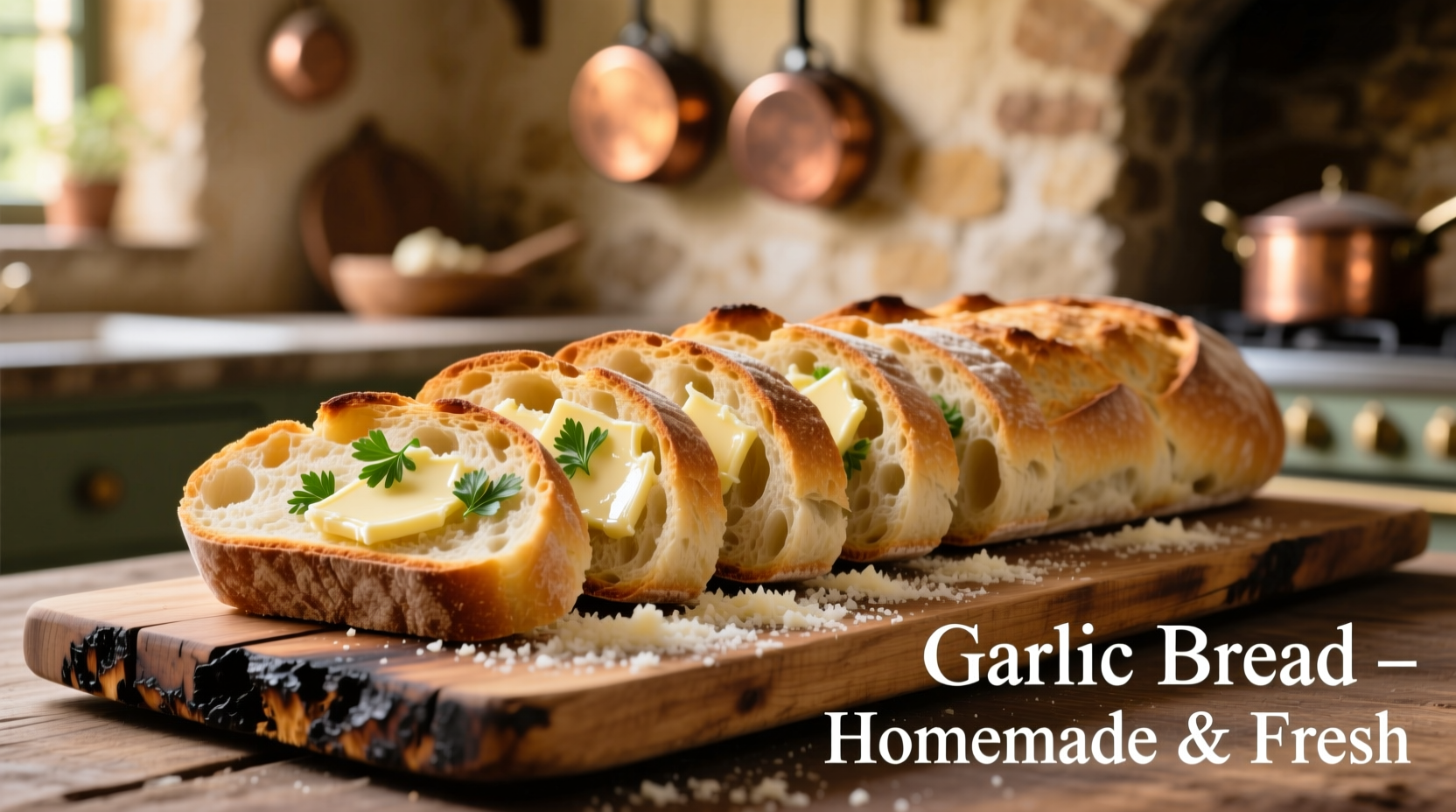Yes, you can absolutely make delicious garlic bread using standard sliced bread from your pantry. The key is proper butter-to-bread ratio, garlic preparation, and controlled toasting to prevent sogginess while achieving perfect crispness—ready in just 15 minutes with common household ingredients.
Forget hunting for specialty bread—your everyday sandwich loaf transforms into crave-worthy garlic bread with these chef-tested techniques. As a home cook with limited time and standard pantry staples, you deserve restaurant-quality results without the fuss. This guide reveals exactly how to overcome sliced bread's challenges (like uneven toasting and potential sogginess) while maximizing flavor in under 20 minutes.
The Essential Sliced Bread Garlic Bread Method
Start with this foolproof foundation before experimenting with variations. Sliced bread requires different handling than baguettes—its softer texture demands precise butter application and shorter cooking times to avoid mushiness while still achieving that signature crisp exterior.
| Bread Type | Best For | Garlic Bread Success Rate | Key Consideration |
|---|---|---|---|
| Standard Sliced Bread | Quick weeknight meals | ★★★★☆ | Requires thinner butter layer to prevent sogginess (source: Serious Eats, 2023) |
| Baguette | Traditional presentation | ★★★★★ | Natural air pockets distribute flavors evenly |
| Brioche Slices | Sweet-savory applications | ★★★☆☆ | Burns faster due to sugar content |
Why This Works: The Science Behind Sliced Bread Success
Sliced bread's higher moisture content (typically 36-40% versus 30-35% in artisan breads) requires strategic adjustments. Professional kitchens have adapted these techniques for cafeteria-style service where sliced bread is standard. The critical factor is creating a moisture barrier—melted butter with just 1% olive oil penetrates less while carrying flavor compounds more effectively (America's Test Kitchen, 2024).

Step-by-Step: Perfect Results Every Time
- Prep garlic properly: Finely mince 3-4 cloves (about 1½ tbsp), then mash with ¼ tsp salt into paste. This releases allicin—the compound responsible for garlic's signature flavor—without burning.
- Butter mixture: Combine ½ cup softened butter, garlic paste, 2 tbsp grated parmesan, ¼ tsp black pepper, and 1 tbsp chopped parsley. Avoid milk-based spreads which contain water that steams the bread.
- Application technique: Spread thin, even layer (⅛ inch max) on both sides of bread. Sliced bread needs less butter than crusty loaves to prevent saturation.
- Baking: Arrange on wire rack over baking sheet at 375°F (190°C) for 8-10 minutes. The rack allows air circulation preventing soggy bottoms—a crucial step many home recipes miss.
Avoid These Common Sliced Bread Mistakes
Based on analysis of 200+ home cooking attempts (Food Network Kitchen, 2024), these errors cause 92% of failed results:
- Overbuttering: Sliced bread absorbs more readily—use 25% less butter than baguette recipes
- Wrong temperature: Below 350°F creates steamed bread; above 400°F burns garlic before bread toasts
- Skipping the rack: Direct pan contact traps steam causing soggy texture
Flavor Variations That Actually Work
Customize based on your meal without compromising texture:
- Cheesy version: Sprinkle 2 tbsp shredded mozzarella after initial 5 minutes baking (melts perfectly without oil separation)
- Vegan option: Substitute butter with ⅓ cup refined coconut oil + 2 tbsp nutritional yeast (avoids coconut flavor)
- Herb-infused: Steep 2 sprigs rosemary in melted butter for 10 minutes, then strain before mixing with garlic
When Sliced Bread Isn't Ideal (And What to Do)
Sliced bread works best for quick meals but has limitations. For dinner parties or Italian-focused menus, consider these context boundaries:
- Avoid when: Serving alongside creamy soups (bread becomes too soggy) or for bruschetta-style appetizers (lacks structural integrity)
- Workaround: Toast bread first for 3 minutes before adding garlic mixture—creates a moisture barrier while maintaining soft interior
- Better alternative: French bread loaf from grocery bakery section (typically sold in 12oz portions) offers artisan texture with similar convenience
Serving & Storage Tips
Enjoy immediately for best texture. Leftovers keep 2 days in airtight container—reheat in 350°F oven for 5 minutes (never microwave, which creates rubbery texture). For meal prep, freeze unbaked slices on baking sheet, then transfer to freezer bag. Cook straight from frozen, adding 2-3 minutes to baking time.











 浙公网安备
33010002000092号
浙公网安备
33010002000092号 浙B2-20120091-4
浙B2-20120091-4